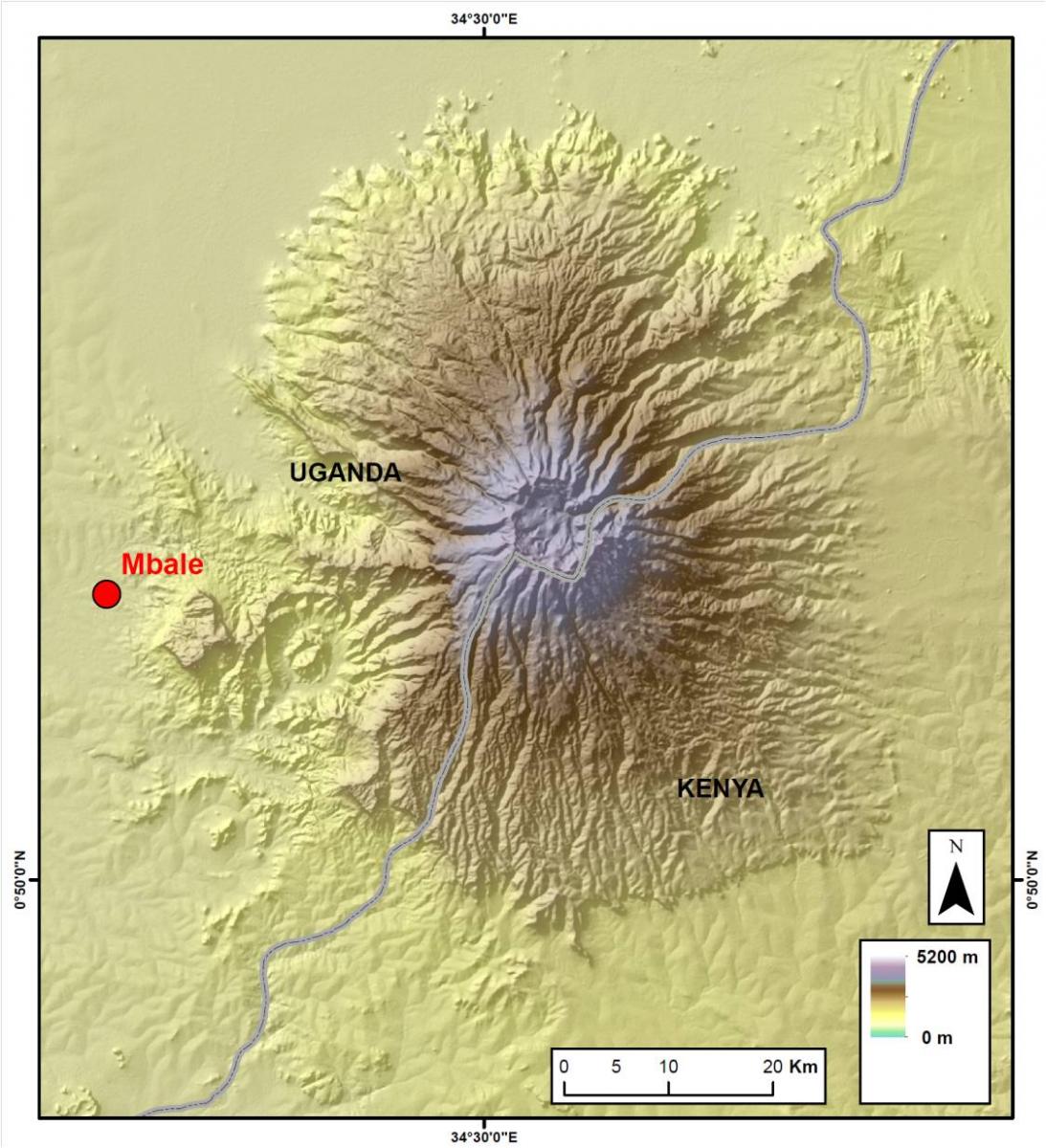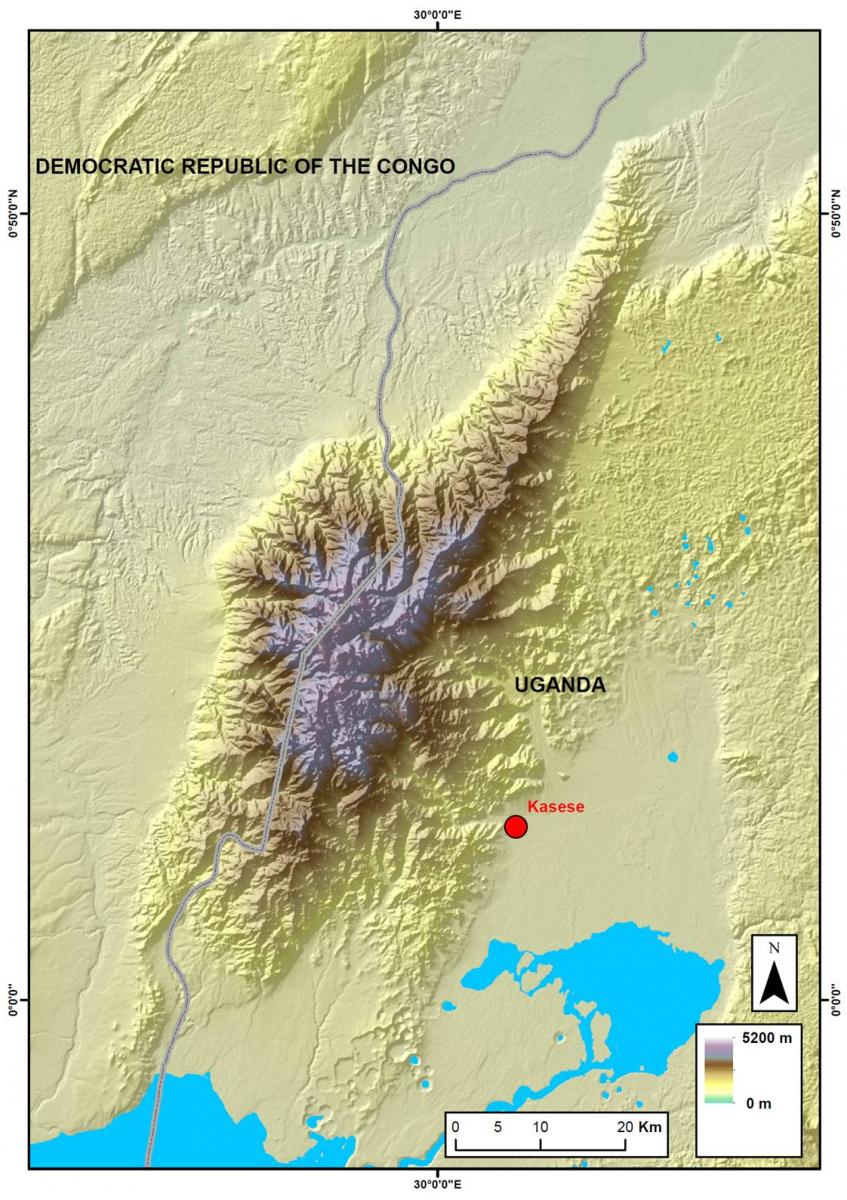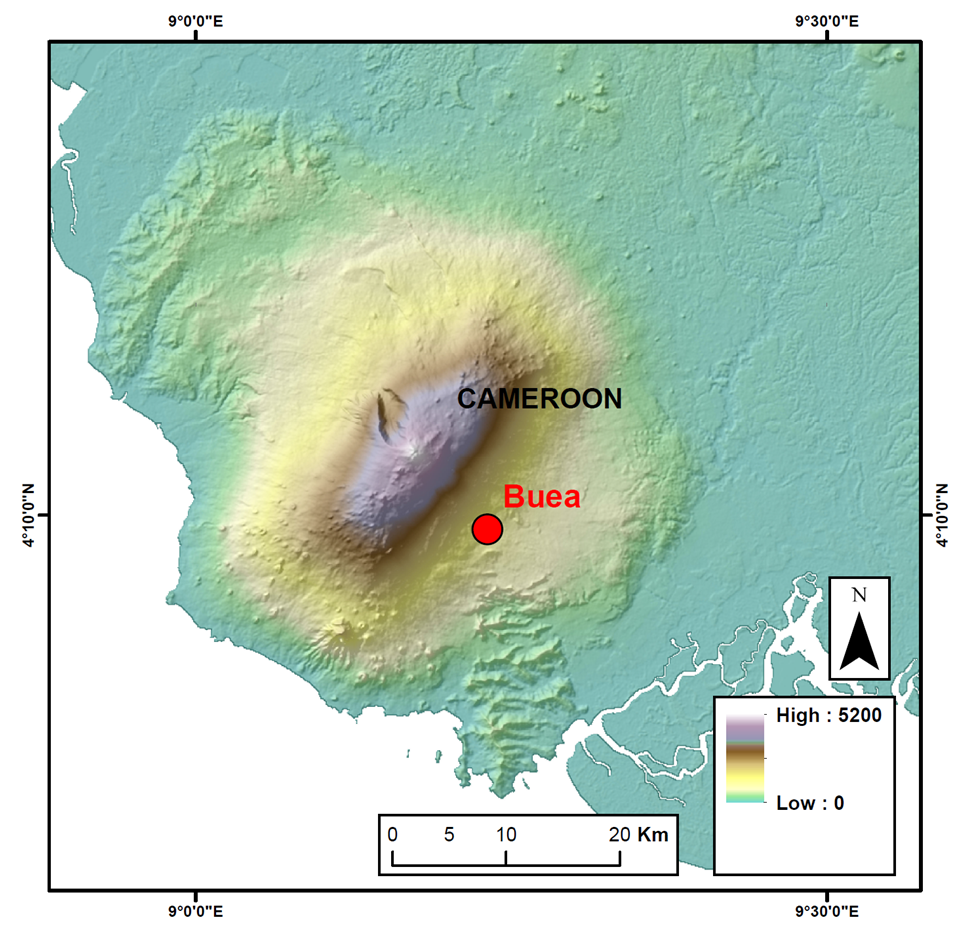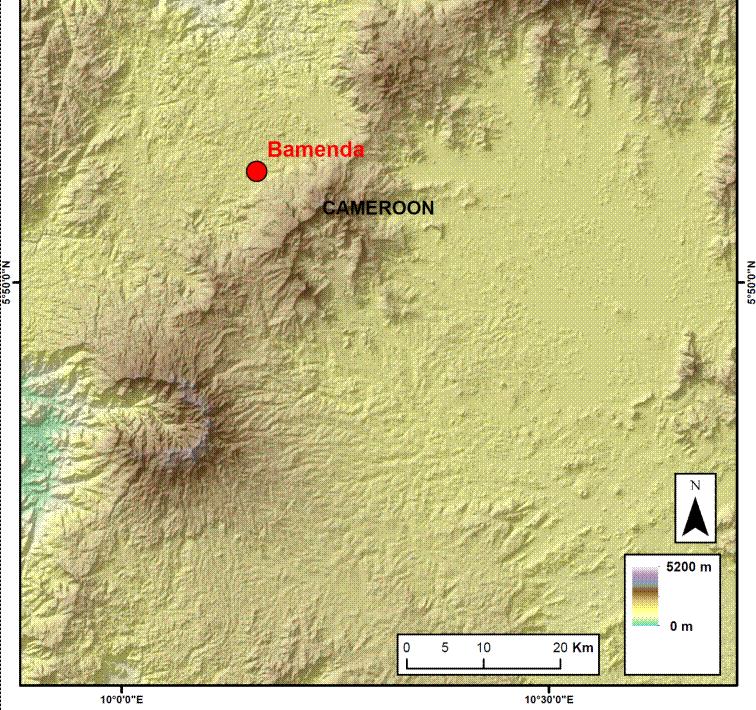Study areas
Study areas
Both Cameroon and Uganda stand as examples for the steep, highly weathered areas of the wet tropics that face a high population density and pressure. People encroach steep slopes and clear forest to get access to land for building their houses and generating an income through agriculture.
In the Ugandan study areas, both shallow and deep-seated landslide are frequently occurring on the densely populated footslopes of Mt Elgon and Mt Rwenzori. From 2010 to 2012, over 500 people were killed by dramatic deep-seated LS in the Mt Elgon region. As very few information is available for the Rwenzori region, while there are strong indications that landslides are a big problem in the region, it will be the major study area for the project.


Along the Cameroon Volcanic Line in the NW and SW provinces of Cameroon, dominantly shallow translational landslide affect the steep and highly weathered residual soils formed on dominantly volcanic rocks. Several fatalities and major economic disruptions are experienced every year. Two study areas have been identified in SW Cameroon: the semi-urban and urban region around Limbé and the Bamenda region.


In both countries, the local population and stakeholders are aware of the landslide risk but struggle to implement efficient resilience strategies, due to the lack of enforced land use plans and the high pressure on the land. Therefore local stakeholders are urgently demanding to investigate efficient resilience strategies that would be acceptable for the local population, adapted to their livelihood and enabling a safer and sustainable development of the region.
More on
